Driving in Morocco is nothing short of an adventure. Here’s what you need to know when planning your Morocco road trip.
You can also find our guide to 7 day Morocco itineraries here.
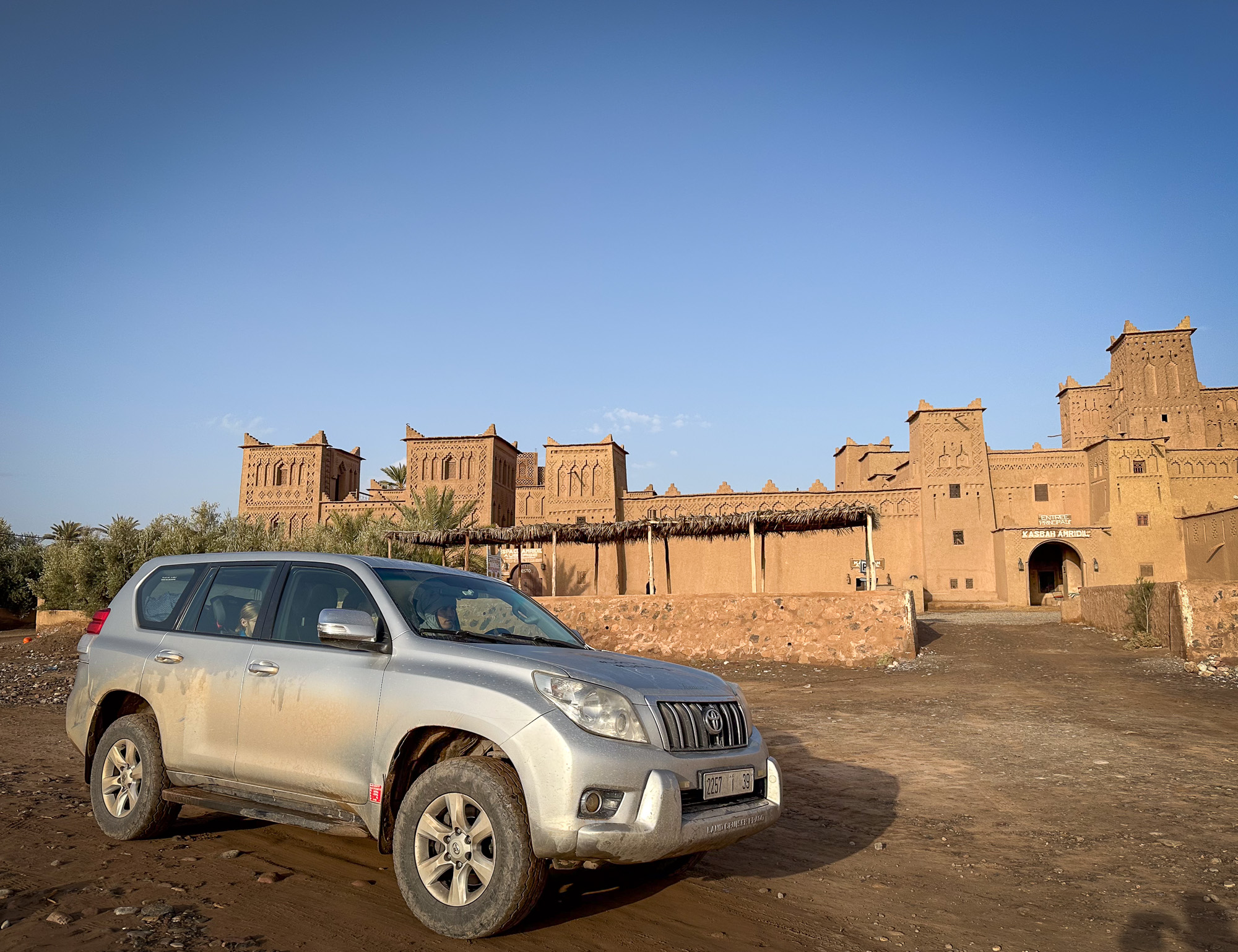
Driving in Morocco
Driving in Morocco tested my skill, my stamina and, let’s face it, my sense of humour. Yet it yielded unbelievable rewards in terms of landscape, life lessons and tales to tell my grandchildren, should I survive and be lucky enough to have them.
It’s an adventure but it’s not as tough as many people think.
I’ve driven as a woman on my own and taken part in road trips with a driver. And all have been spectacular.
But there are things that you need to know. Let’s start with the basics, then move on to a travel story and the best way to plan a road trip through Morocco.
Seatbelts fastened, ready to go? Yallah, yallah!
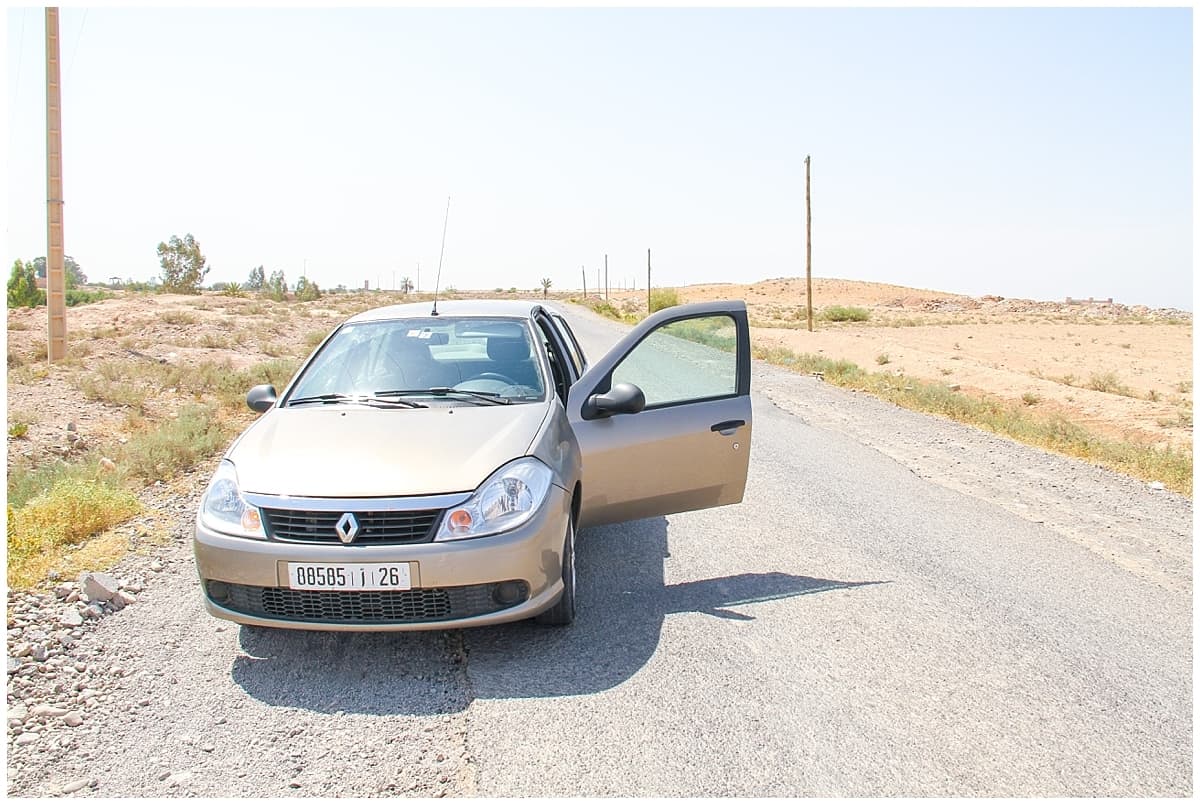
My first time driving in Morocco
It’s an inauspicious start. No map. No SatNav. No Google Maps. No cash – my very last dihram cleared out by the unexpected fuel charge.
No internet access to check the route. No signal on my iPhone. Just a pen, a scrap of paper and a hastily scribbled map, uneven streaks of biro connecting Moroccan towns that appeared on a picture in the hotel lobby.
I climb into the car. Already a crowd has gathered. Women, I am to discover, seldom drive solo beyond the limits of Marrakech. And women around here seldom are blonde.
I reverse. I stall. The crowd grows larger.
By now two or three men are beckoning in different directions, coaxing me towards them and blocking the only free tarmac I see. I kangaroo hop to avoid them, awkwardly testing the limit of the brakes.
The crowd grows again. More men fill the gateway.
I go inside my head, pretend I’m invisible and that this isn’t at all embarrassing and roll down the window.
“Which way to Marrakech?” I ask in far from seamless French.
“A droite,” comes the reply. To the right.
I turn left and hit the road.
The tyres squeal against the tarmac – or perhaps that’s just my imagination – and I’m away.
Can women drive in Morocco?
Yes, women can drive in Morocco. I drove in Morocco and I’m a woman. But, man or woman, I’d suggest you pay attention to the road safety tips below to avoid being stranded in the dark…
Camels on the road
A regiment of palm trees stand shoulder to shoulder as I zip by, leaving the comfort of the soothingly beautiful Les Deux Tours behind. Palm after palm after palm. This area’s called La Palmeraie and you don’t need in-depth local knowledge to work out why.
Stripes of rust earth, ribbed trunks and swaying fronds flit past the window as I shift through the gears and take the road in my stride.
It’s not all palms, of course. There are camels, too, decked out in scarlet waistcoats and waiting by the edge of the road. Impatient, bored, scheming and magnificent, they look every bit as untrustworthy yet charming as when I first met them oh so many years ago.
In fact, it’s strange to realise that up until now I’ve spent more time on a camel in Morocco than I have behind the wheel, a surely distorted viewpoint.
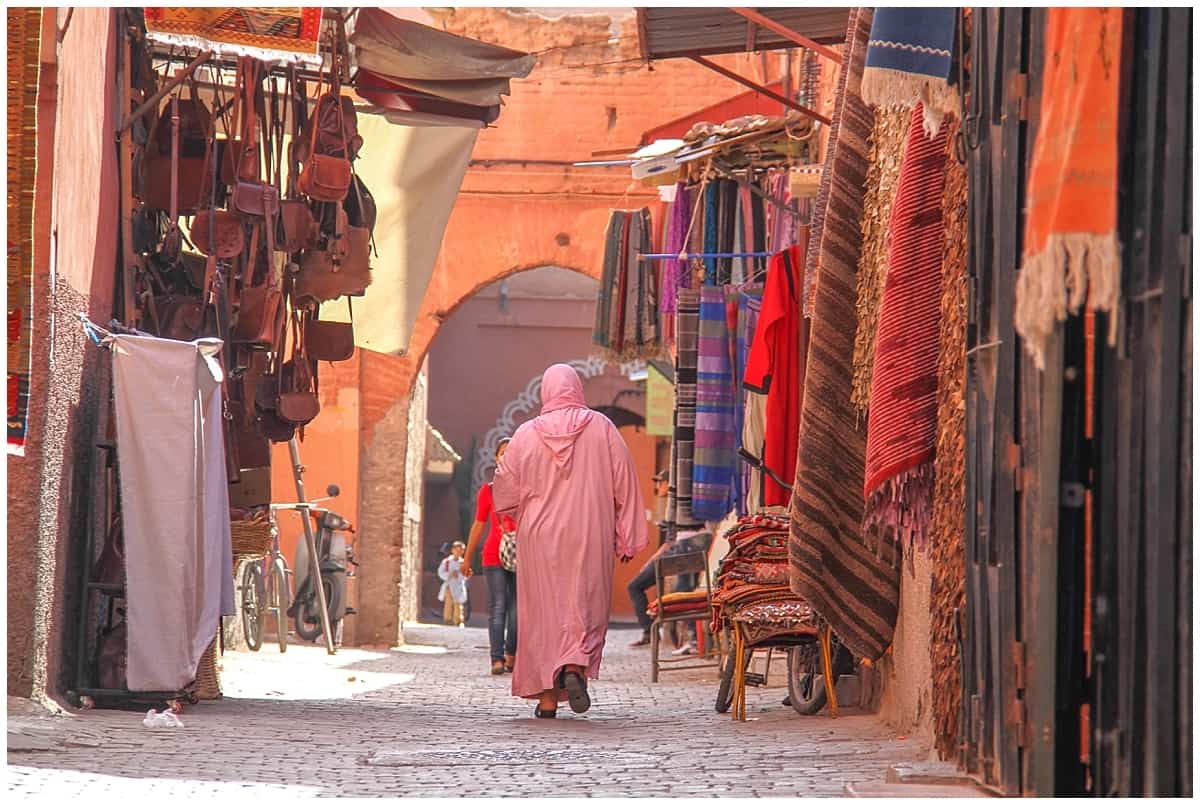
A little lost
I glance back at my scrap of paper. My backup plan of buying a map at the side of the road hasn’t amounted to much. Garages here sell oil, diesel and various car parts but have not, it would seem, fallen in love with cartography.
Ah well. I have all day to reach the coast. One way or another.
That one way lies somewhere between the towns of Safi and El Jadida. I follow the signs to either one, hoping that at some point Oualidia will rise up on the road names like the proverbial oasis in the desert.
Beautiful Solitude
The roads are drier now, and dusty, the palms long since left behind. Scratchy, feisty clumps of grass snarl through every now and then, a scrappy kind of plant that’s born to survive. A lone stone house whizzes by, flanked by deep green trees but otherwise steeped in solitude.
For the most part, there’s no-one else around. Just me and the car swooping and swerving across this great terrain, building up the miles, earning my passage to the sea.
On the road
Every now and then, I see a donkey. Or some goats. A chicken or a line of schoolchildren, a radar that tells me I’m approaching a town and that I need to slow down. Cars don’t command much respect in these villages, I’m learning, where the road doubles as the marketplace, the park, the youth club and grandma’s gossip corner. A town of no more than 100 yards may take more than ten minutes to crawl through.
The other reason to slow down is for the police, who pop up like peppered pilgrims gliding towards my car. It’s my only conversation but after a while the rhythm and routine dissolve the human contact into a softly edged trance.
Where are you going? Where are you from? Where are your papers?
Drive on.
I first glimpse Oualidia at one of these stops. A sliver of silver on the horizon, the fabled 10 kilometre saltwater lagoon.
I’ve arrived.
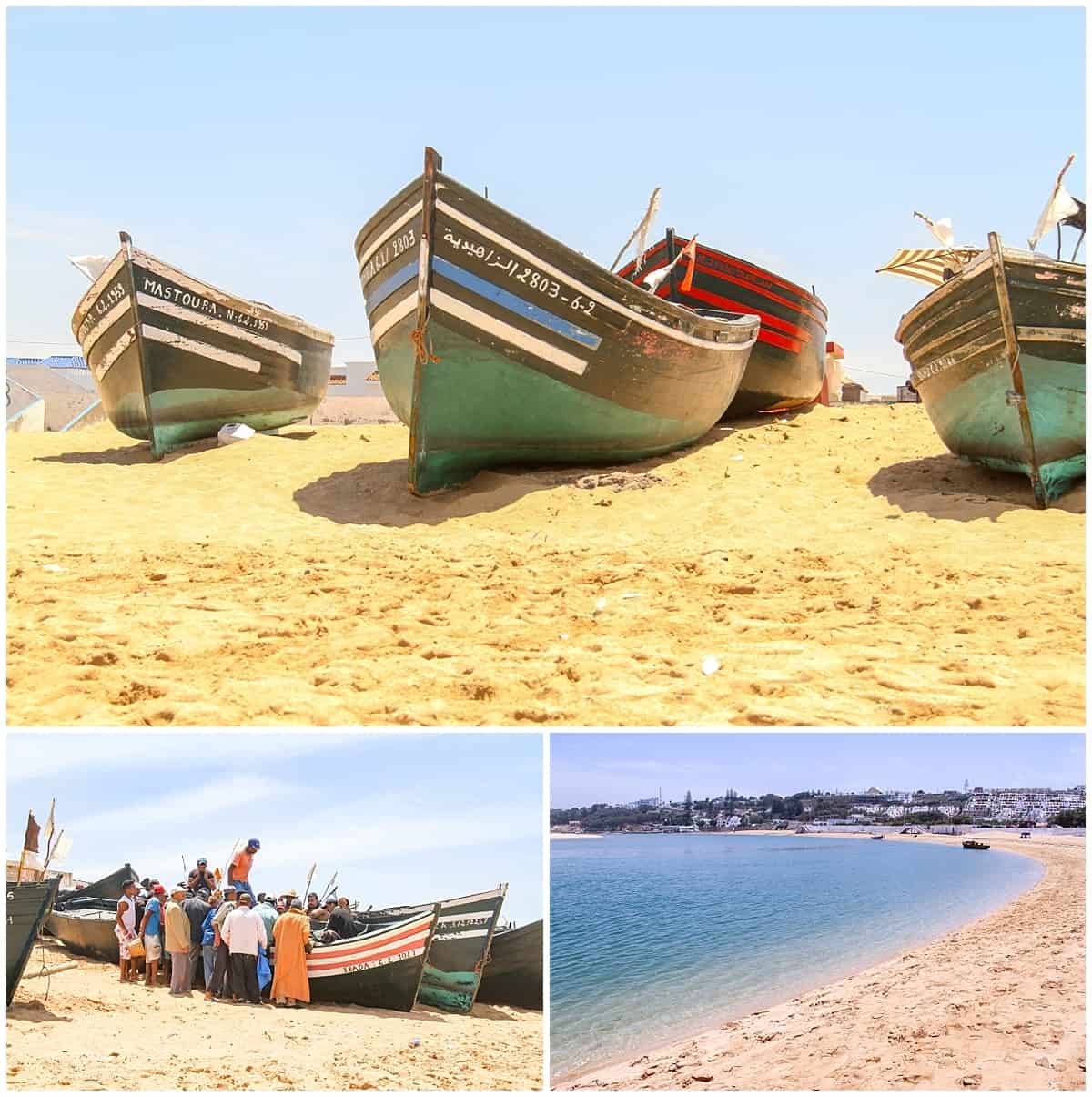
From Oualidia to Marrakech
Barely two days later I’m off again, tearing through the ringroads of Marrakech en route to the foothills of the Atlas mountains.
The city of Marrakech is different behind the wheel. Instead of pyramids of spices, snake charmers and incense, there’s housing estates, McDonalds, H&M and C&A. The roads cram with perpetual motion, cars crissing and crossing yet never ceasing in their voyage around and around this fascinating city.
Novice that I am, I miss my turn and am trapped. Driving and driving, around and around. The new buildings look so familiar, the traffic lights the same, the police stops monotonous. At what point, I wonder, will the police mark my behaviour as suspicious when every patrol on duty realises they know where I’m from.
Eventually, I break free.
I’m not sure where I’m going but at least I’m going somewhere.
What are the speed limits in Morocco?
The speed limits are 40 km/h (25 mph) in towns, major cities and urban areas, 100 km/h (62 mph) in the countryside and rural areas and 120 km/h (75 mph) on motorways and main roads. Plan on travelling significantly slower in some rural areas with villages, as pedestrians, goats and camels may slow you down. Alternatively, in some rural areas without villages you’ll barely see a soul on the road so you won’t get stuck in traffic.
From Marrakech to the Atlas Mountains
Stones and dust bounce under the wheels as I crawl through the villages, past blocked earthen mosques, the stares of wide-eyed children, and the utter hilarity of men behind the wheel.
I drive past cacti and olive groves, copper mines and cattle, the landscape of Andalucia daubed in Islam instead of Catholicism.
As the mountains approach, the road tightens and turns, twisting towards the peaks and, by now, the promise of rest and fresh water.
The roads are wider than in Spain and the French Pyrenees, the turns thrilling not thunderous.
By the time I arrive, though, I am much like the land I have driven through. Dry, dusty and in need of a good drink.
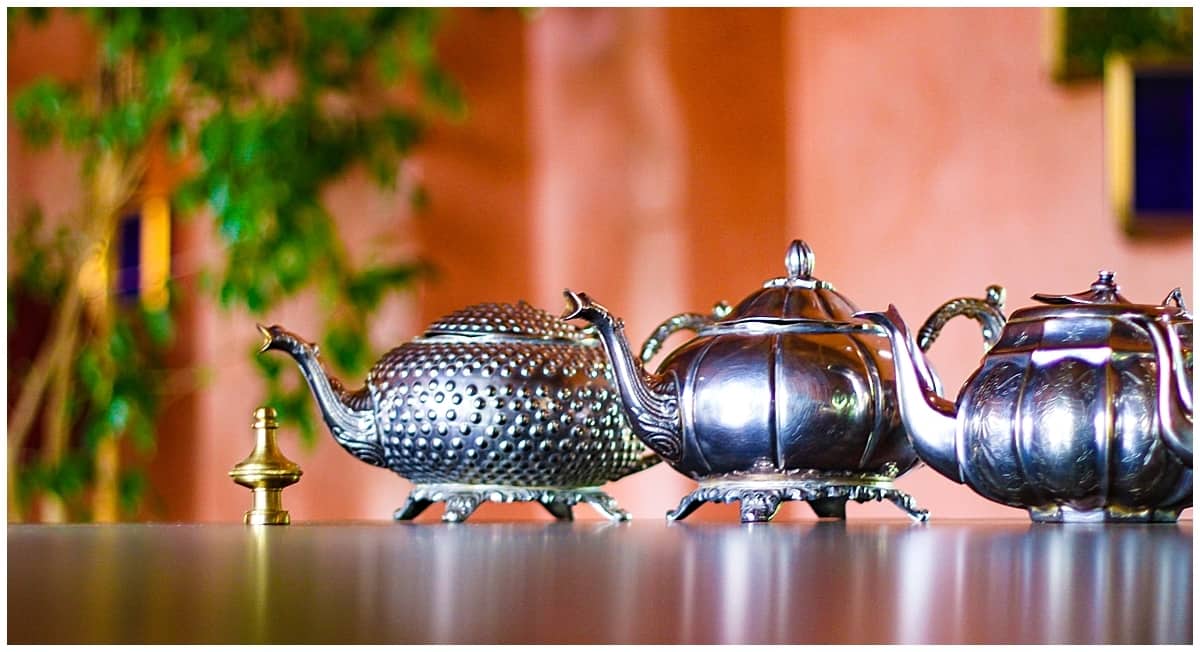
My final stop is La Roseraie. It’s awash with lanterns as dusk accompanies me and the paths are strewn with rose petals.
Their scent swims around me as someone pours me tea.
I’ve arrived in the Garden of Eden. And as it turns out, I didn’t need a map.
Is it safe to drive in Morocco?
In a word, yes, as far as driving anywhere goes. But there are some driving tips to consider before you hit the Moroccan roads and it’s not for the nervous or easily flustered. If you’re not sure if you’d feel comfortable, then consider the other options. Morocco’s public transport isn’t very flexible, so perhaps hire a driver through a tour operator or join a group tour instead. The best way to see Morocco is the way that makes you feel happiest. That, after all, is the point.
Which side of the road do they drive on in Morocco?
In Morocco, you drive on the right side of the road.
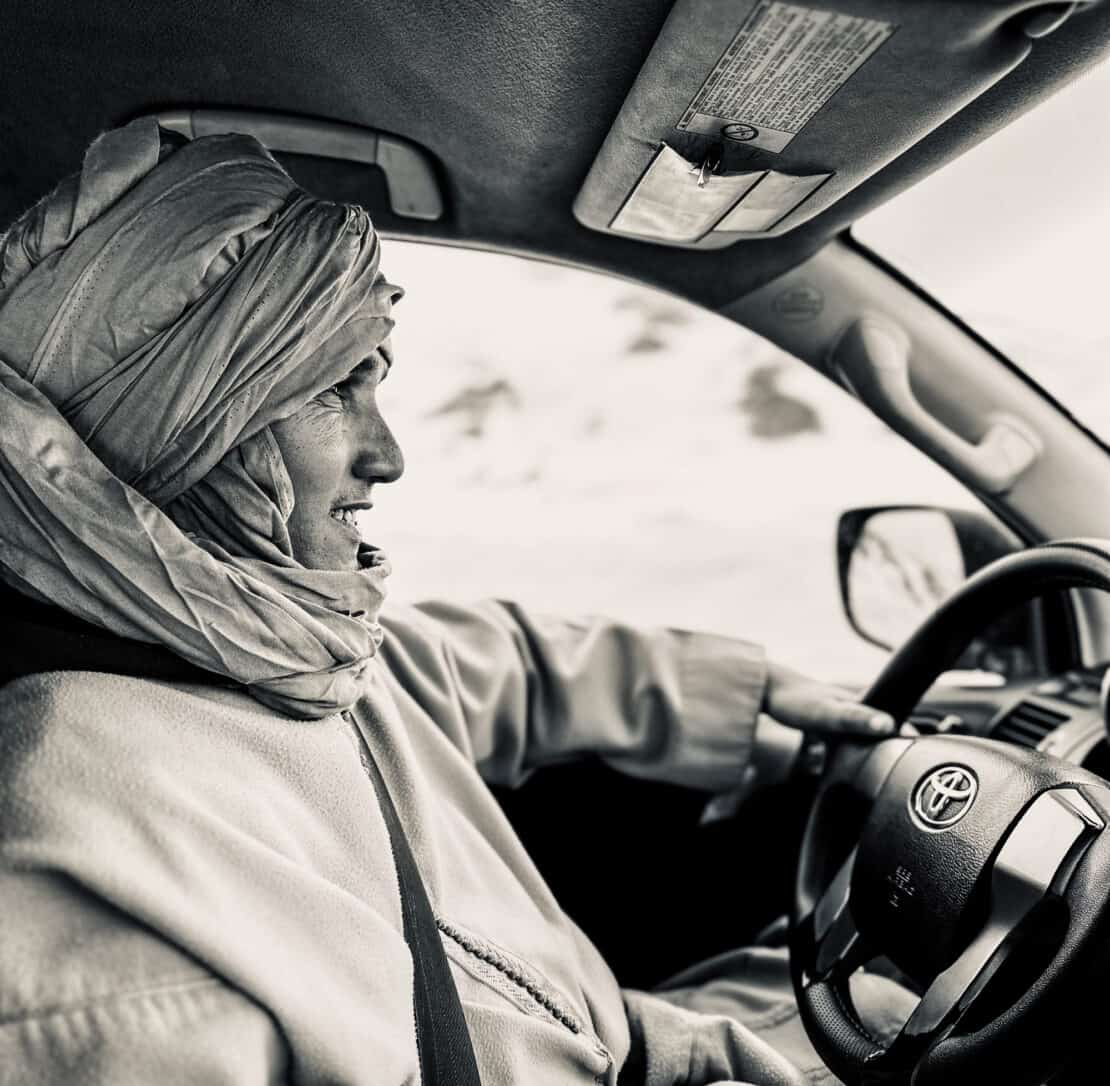
Driving Tips for Morocco
I’ve gathered together everything I wish I’d known right here, with thanks to Eric Ratner, who left helpful tips in the comments below as well.
Overtaking
Don’t drive in Morocco unless you have a lot of experience in overtaking, and being overtaken by, other vehicles on narrow 2-lane roads.
Language Skills
Because the road signs are terrible, sooner or later you’re going to have to ask for directions. Moroccans are very helpful and friendly, but in many places they don’t speak English. You probably shouldn’t drive unless you can speak French or Arabic well enough to ask for directions and understand the answer.
Our Road Trip Planner can help with that.
Be Brave
Driving in Morocco is not for the faint of heart — in towns you must make your way through roads clogged with cars, bicycles, motorcycles, donkey carts, farmers on mules, sheep, buses, and pedestrians in the middle of the road, none of whom are paying the slightest attention to any traffic laws. Navigating in such places can be done, but it requires your full attention.
Avoid the Big Cities
If at all possible, avoid driving in the bigger cities, particularly Marrakesh. As with so many places, Moroccan cities have traffic problems and parking issues and you don’t benefit all that much from having your own wheels. Plan on a few days in the city without your car before picking up your car rental.
Follow the Rules
Don’t exceed the posted speed limit, make a complete stop at stop signs, and don’t drive at night. Even many Moroccan drivers prefer to travel by day.
Be ready for frequent police stops and have your documents, including a valid driver’s license ready at all times.
Wear a seatbelt. It’s the law (and also a sensible idea.)
Leave yourself plenty of time
Don’t assume that your average speed on most highways will be more than about 40 miles an hour. Stuff will happen that slows you down, and if you overestimate the distance you can travel in a day you may find yourself in the middle of nowhere with darkness approaching.
Road conditions are usually good but can become patchier as you venture off the beaten track.
Travel with insurance
Think about insurance in advance. You don’t always have to book it through the car rental company, either.
Fuel Up Regularly
Whether you call it petrol or gas, top up whenever you can and make sure to have plan. Petrol stations are in scarce supply outside the main cities, so you need to stock up. See also this guide on how to plan a road trip by yourself.
Carry Cash and a Credit Card
It’s a good idea to carry both a credit card and some local currency, especially if you’re heading into remote areas or passing through toll roads.
Check out your rental car
Book with reputable rental companies and use your handy rental car checklist to make sure that all is well before you set off on your adventure. Make sure the vehicle is in good condition, has seatbelts in both front seats (and the back if you plan on having passengers there.)
It may make sense to bring your own vehicle if you’re travelling south from Spain or into Morocco from another African country. But for most tourists, it makes sense to hire a car instead.
Do you need an international driving permit in Morocco?
Most reputable rental companies will accept a valid driver’s license from your home country. It helps to arrange a Moroccan road trip with a trusted tour operator to make sure that you are up to date with all the road rules and regulations.
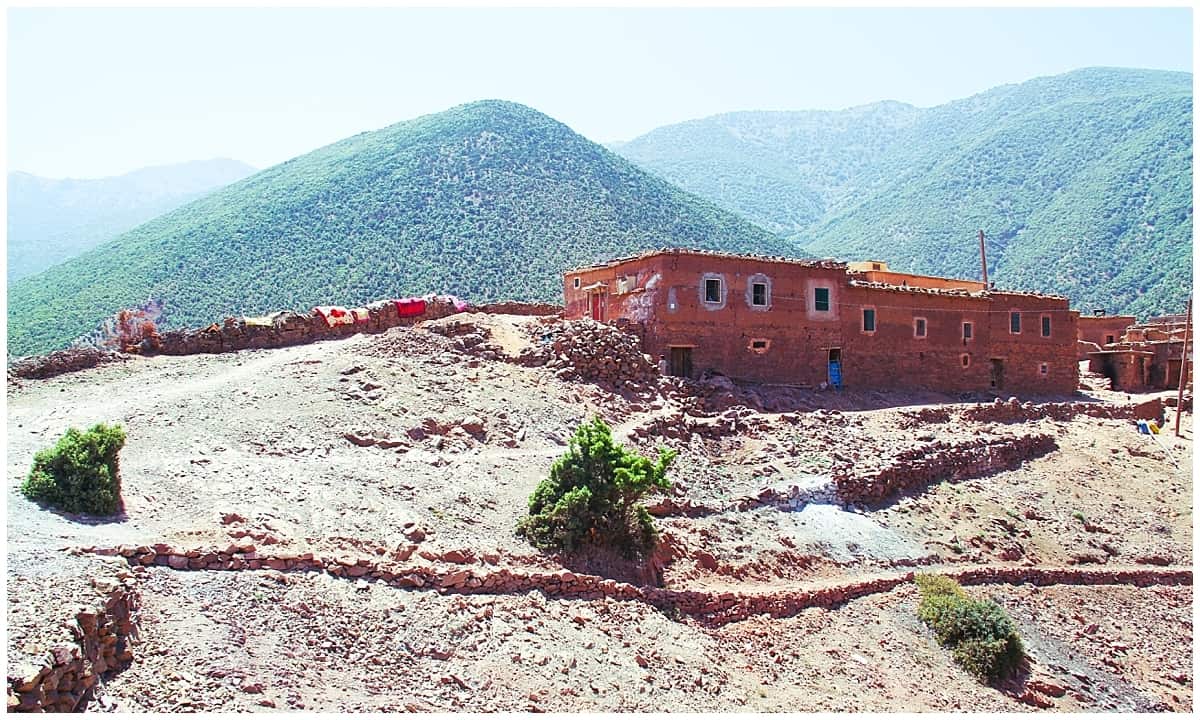
More About Travel in Africa
- The best places to visit in Africa: how to build your bucket list
- Namibia and the oldest desert in the world
- The best beaches in Madagascar
- What safari guides really fear in Botswana’s Okavango Delta
- How the red tsingy in Madagascar are the perfect antidote to travel overload.
- The real pride rock
- Hiking through Ouirgane valley in Morocco
- What you need to know about trekking Kilimanjaro
- 10 Great reasons to visit The Gambia
More on Road Trips
- The Road Trip Challenge
- You Complete Guide of Road Trip Essentials
- Road Trip Quotes to Inspire You
- Get your copy of the Road Trip Planner here.

I have only been in Marrakesh in Marocco, but after reading your post I’m definitely going back to Marocco to do some more exploring. Thank you for sharing.